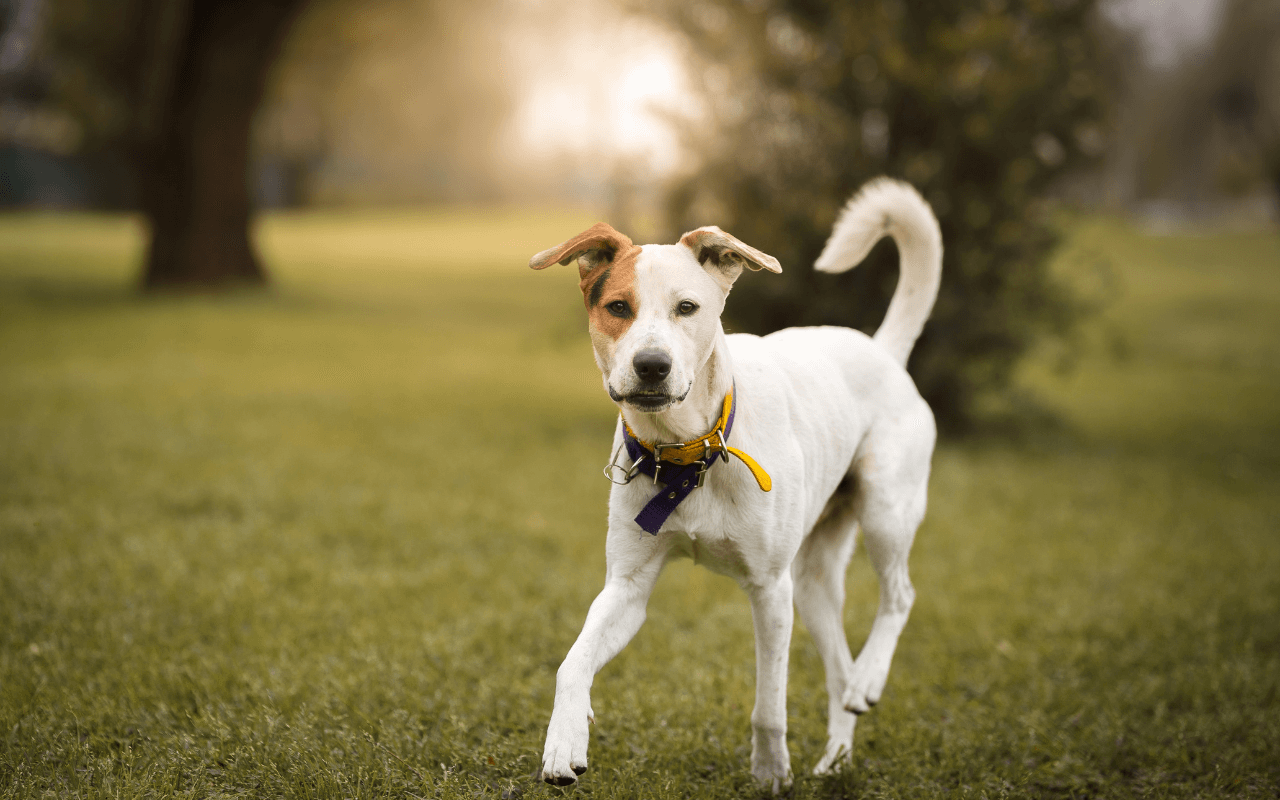How Dogs React When Scared: A Dog’s 4 Fear Responses | Pupford
25 Comments Filed under behavior
Fear is an evolutionary response to protect us during life or death situations. When a dog encounters a potentially threatening or anxiety-inducing situation, they will respond with a fear response.
But not all dog’s will respond to fear in the same way. Their response may vary based on genetics, past experiences, and their coping skills learned during their socialization period.
It is essential to understand how dogs display and respond to fear so we can effectively address their emotional well-being.
In this blog post, we will explore the 4 primary fear responses in dogs, also known as the 4 F’s: Fight, Flight, Freeze, and Fidget. By understanding these responses you will have a better understanding of your dog’s behavior and how it may impact your training goals.
Here’s what we’ll cover:
- Fight Response
- Flight Response
- Freeze Response
- Fidget Response
- Combining Responses
FIGHT RESPONSES IN DOGS

The Fight response is one of the most common, and misunderstood fear reactions in dogs. When a dog perceives a threat in their environment, they may react by barking, growling, or lunging as a way to get the threat to move further away from them.
We often see this with reactive dogs who struggle to encounter other dogs when out on walks or who pass by their yard.
It is essential to remember that this reaction isn’t necessarily an indication of an inherently aggressive dog, but a response to fear of a perceived threat.
When working with a dog who is displaying a fight-fear response, it is important to avoid any aversive training methods or the use of punishment. Using these tactics can exacerbate the fear making the response worse. Instead, use positive reinforcement training methods to work on changing the dog’s emotional response to the stimulus that invokes fear.
If you have a reactive dog and are looking for training, check out our Reactive Dog Course!
FLIGHT RESPONSE IN DOGS

The Flight response is another common fear response that you have most likely seen your dog or another dog perform.
When a dog is frightened, they may instinctively try to escape from the perceived threat by quickly moving away. This might look like running away, hiding, or seeking a safe space to retreat.
Dogs will also display body language that indicates fear and appeasement including a tucked tail, low body posture, ears back, whale eyes, lip licking, etc.
Dogs who display this response should not be forced to interact with or be in an environment with whatever they deem threatening. Instead, use counter-conditioning and desensitization techniques to gradually build the dog’s confidence and comfort level in the presence of the fear-inducing stimulus.
FREEZE RESPONSE IN DOGS

The Freeze response is where a dog will remain completely still in the presence of a perceived threat with the hope that it will move past them without noticing them.
Dogs may also exhibit this response when are unsure how to react or if they feel trapped. The dog will likely have tense body language, and avoid making eye contact, with tight lips and their ears back.
Dogs displaying this fear response should not be forced to move as this can exacerbate the fear. Instead, do your best to remove the trigger that is causing them fear, provide them with comfort items, and make changes to their environment that may make it more soothing such as playing white noise.
Related Reading: Dog Noise Phobia
FIDGET RESPONSE IN DOGS

The Fidget response is a less commonly recognized fear response. When a dog exhibits the fidget response, they display restlessness, nervousness, and often displacement behaviors like excessive scratching, yawning, lip licking, whining, or pacing. These behaviors are a way of coping with the stress and anxiety they are feeling.
It is important to address the fidget response with patience and empathy. Recognize that the dog is experiencing fear, and the fidgeting is a sign of their discomfort.
COMBINING RESPONSES
Sometimes dogs may display a combination of fear responses or transition from one to the other. For example, a dog may initially freeze when confronted with a scary stimulus, but if the opportunity arises to escape, they might transition to a flight response. Or if pushed past their limits and their warning signs are not listened to while fidgeting, they may resort to a fight response if their fear escalates.
Understanding the 4 F’s of fear - fight, flight, freeze, and fidget - is crucial to addressing behavioral concerns and addressing our dog’s emotional well-being. By recognizing these fear reactions we can help our dogs overcome their fears, build confidence, and have a happier relationship with our pups.

25 comments
Leave a CommentMy 1 year old cavapoo is fight response (dog reactive) she is small and when we are on leash in a dog friendly store, when we see a dog, she will bark, stare, growl, and/or lunge. The other dog(s) thankfully just look at her. We have had this for a while. She gets along with dogs like my brothers 2 labs, and her geeman shorthaired pointer friend, but could it be that she is on leash, or at the store, or what? We are currently working on this. I will give an update in the future in a few months how she is doing. Give your dogs lots of pets and treats!
How do I help with fear response? Molly is almost 2 and whines on long car rides. She didn’t do this last year. She seems excited to get out of the car to run…help
Hi Camille! You want to teach her an alternate behavior to perform and create positive associations with things that scare her. Look up “reactive” and “reactivity” on our website, you will find resources for exercises like LAT (look at that) and engage/disengage that will be helpful
Hi Sandy! This is a submissive behavior that indicates your dog may be uncomfortable or fearful. When does she offer this behavior?
Just the opposite of fear, but not aggression, either: If my 1yo poochon is on the leash and a dog she hasn’t met yet goes by just out of reach, she’ll try to reach the other dog and bark, bark, bark as if to say, “Hey! Why can’t I meet him? I want to meet him!” If the other dog does come in close enough, she’ll go all, “Hi! Hello! Do you come here often? It’s so exciting to meet you!” without even an ounce of fear or aggression. How can I apply positive, non-punishing training to this to stop this kind of behavior while still having her enjoy meeting new friends?